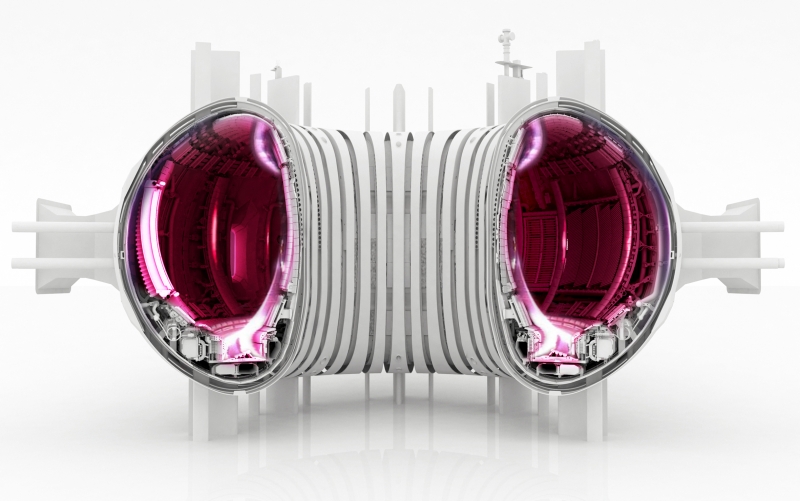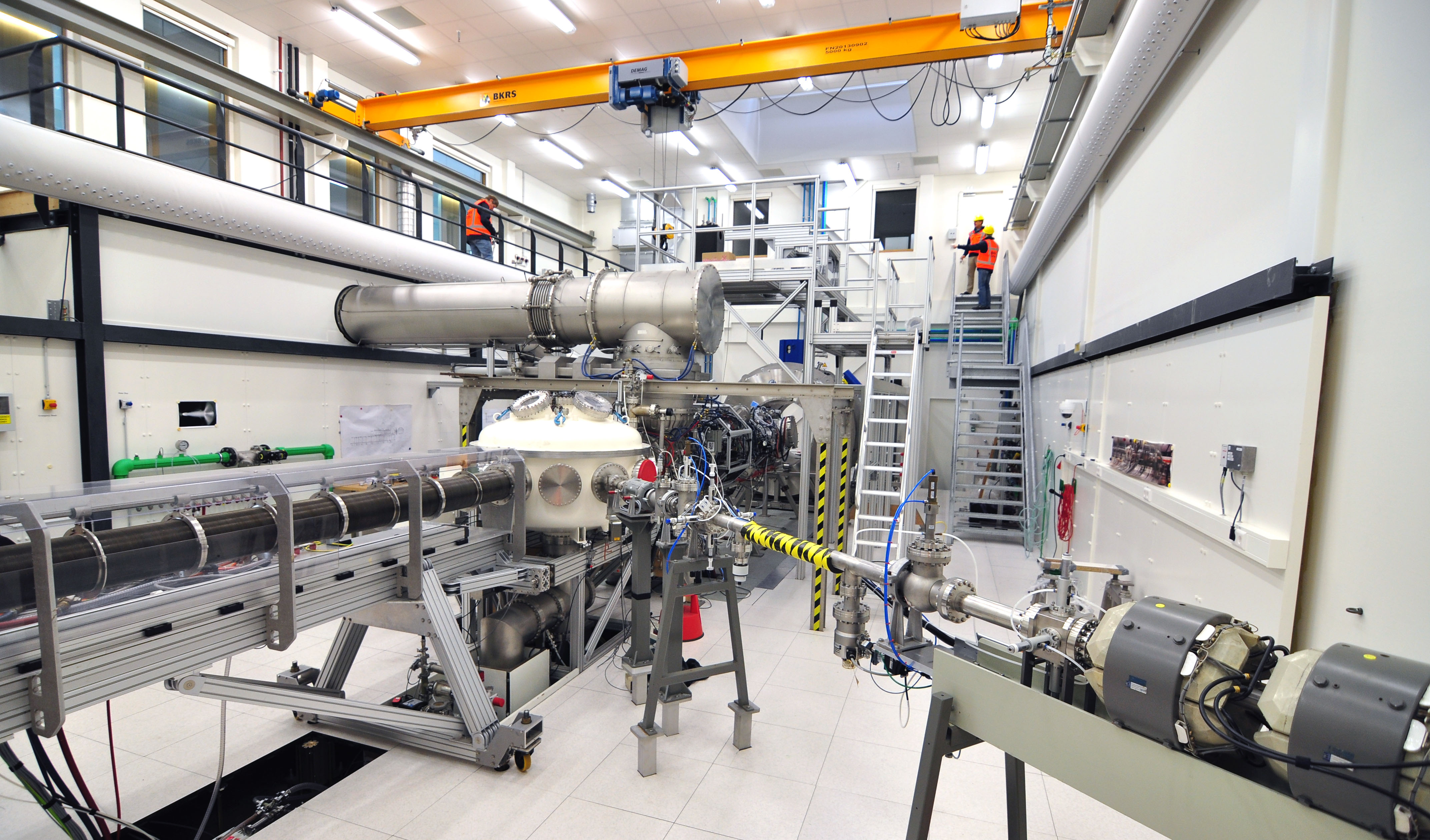FOM Institute DIFFER is starting a large research program to tackle the greatest barrier on the road to clean fusion energy. The institute wants to remove heat and fast particles exhausted by the artificial sun in a fusion reactor in a controlled way, before they can damage the reactor wall. The research program Taming the Flame encompasses nine new research positions and is supported by strategic funding from Foundation FOM.
Fusion, the nuclear reaction powering the sun, holds great potential as a clean, safe, large scale energy source on earth. The big challenge to realising commercially attractive fusion energy is protecting the wall of the fusion reactor against the hot exhaust of the artificial star. In a fusion reactor, individual hydrogen nuclei fuse together at high temperatures to form helium and release a great amount of energy. Magnetic fields protect the reactor wall from contact with the fusion plasma (hot, charged gas), except at the reactor's exhaust. Here, the plasma and the wall come into direct contact under conditions similar to the surface of the sun.
In the future fusion reactor ITER, the exhaust faces temperatures of tens of thousands degrees Celsius, an intense bombardment with fast, charged particles, and a heat of load of megawatts to a gigawatt per square meter of exhaust - comparable to a thousand welding arcs, or the exhaust of a rocket. In commercial successors to ITER, the wall will face even harsher conditions, with maintenance being time-consuming and expensive.

keep the hot hydrogen plasma away from the reactor
walls. At the bottom of the machine, the plasma
is guided onto the reactor wall to remove the
reaction product helium. Credit: EUROfusion
Research program Taming the Flame
"In a fusion power plant, even a sturdy metal wall with a high melting point will not be able to resist the plasma", thinks DIFFER's head of fusion research Marco de Baar. The ITER reactor wall design is capable of handling its use as an experiment, but for the fusion power plant which will be built after ITER, no suitable design yet exists. De Baar: "In our research program, we want to already start managing the heat load inside the plasma, and bring the energy to the wall in a controlled way." The research will focus on controlling and dilute the plasma before it reaches the wall, and on the novel concept of a self-repairing exhaust wall, with a liquid metal layer flowing over and protecting the solid reactor wall.
"Taming the fusion exhaust would be very exciting for mainstream fusion research like ITER", thinks De Baar, "but the challenge of protecting the wall against the plasma is just as great in alternative fusion projects, ITER's challengers such as the German stellarator Wendelstein 7-X or the compact ARC-reactor proposed by MIT. We're tackling a fundamental issue here."

in the world capable of examining materials exposed to the intense plasma
conditions at the walls of future fusion reactors. Credit: Bram Lamers
Nine new positions in international research program
DIFFER opens up seven PhD positions and two postdoc positions in the research program. These new researchers will work on an integrated approach of the fusion exhaust challenge together with DIFFER's existing scientific staff. A key experiment in the program is DIFFER's linear plasma generator Magnum-PSI, the only laboratory facility in the world capable of examining materials exposed to the intense plasma conditions at the walls of future fusion reactors. In addition, the team will test their research at existing fusion experiments in Germany, Switzerland and the UK.
Go to the News page.